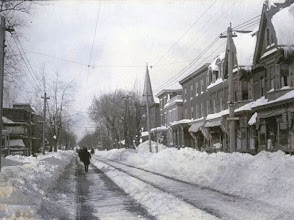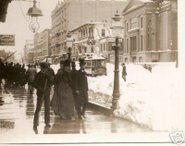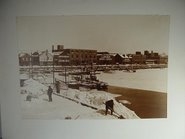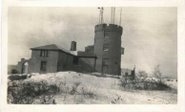Going Negative - Part II
As winter approaches its midpoint next week...seasonable wx in the E has...by and large...been anything but seasonable. Save for a brief cold snap and a smattering of light snowfalls early on...winter/s wx has little to show for itself. El Nino/s been blamed for the current run of well-above normal mean monthly temperatures...as has the North Atlantic Oscillation. Some have even pointed an accusing finger or two at global warming.
Whatever the cause of this winter/s fitful start...hope for a full recovery during its second half is...in some quarters...heavily pinned on the getting the NAO and Arctic Oscillation (AO) teleconnections indexes below zero.
As yesterday/s analysis showed...good snowstorms have occurred in the NE and M-A when the NAO has been above zero. Most of the better storms happened when the NAO was not negative. The NAO and AO often oscillate in tandem...but not always.
When these indices are negative...cold wx does tend to dominant the eastern US but it also can work against snow b/c cold air is dry air.
The 30 snowstorms used in the analysis are not necessarily representative of all snowstorms in the NE and M-A regions. Forecast contests have not been held for all snowstorms...mainly b/c the progs were not conclusive early enough to warrant a decision to hold a contest or the storm was not expected to produce more than nuisance amount or affect more than a few stations. Some storms in the analysis sample did not produce heavy snowfall.
The Arctic Oscillation
The AO was negative for 17 storms (57%). Six of those storms (35%) had a max station snowfall of at least 12". Two of the storms had a max station snowfall of at least 20".
Of the 13 storms where the AO was greater than or equal to zero...five (38%) had max station snowfall amounts of at least one foot and four (31%) had at least 20". Only one storm where the max station snowfall was at least 12" had an NAO less than zero. Max station snowfall where the AO was greater than zero was 27.3"
 There/s a 57% chance that a Contest snowstorm occurs when the AO is negative. When the AO is negative...there/s a 20% chance of one station measuring at least one foot of snow and a 7% chance of a measurement of at least 20".
There/s a 57% chance that a Contest snowstorm occurs when the AO is negative. When the AO is negative...there/s a 20% chance of one station measuring at least one foot of snow and a 7% chance of a measurement of at least 20".There/s a 47% chance that a Contest snowstorm will occur when the AO is positive. When the AO is positive...there/s a 38% chance of at least one foot and an 8% chance of at least 20".
There/s a slightly better chance for a snowfall forecasting contest when the AO is negative than when the NAO is negative. Chances are about equal for a max station snowfall of at least 20" when the AO is either positive or negative; however...when the AO is positive...there/s a better chance of getting a max station snowfall of at least 12".
When the NAO and / or the AO are negative...winter air temperatures are characteristically cold; however...sometimes it/s too much of a good thing b/c cold air is dry air. Regardless of any particular indice/s sign...what/s needed for snow is cold air...moisture...and forcing to provide synoptic-scale upward vertical motion.
In tomorrow/s installment...we/ll look at another important winter teleconnection index -- the Pacific-North American -- to see what happens when it goes negative.























No comments:
Post a Comment